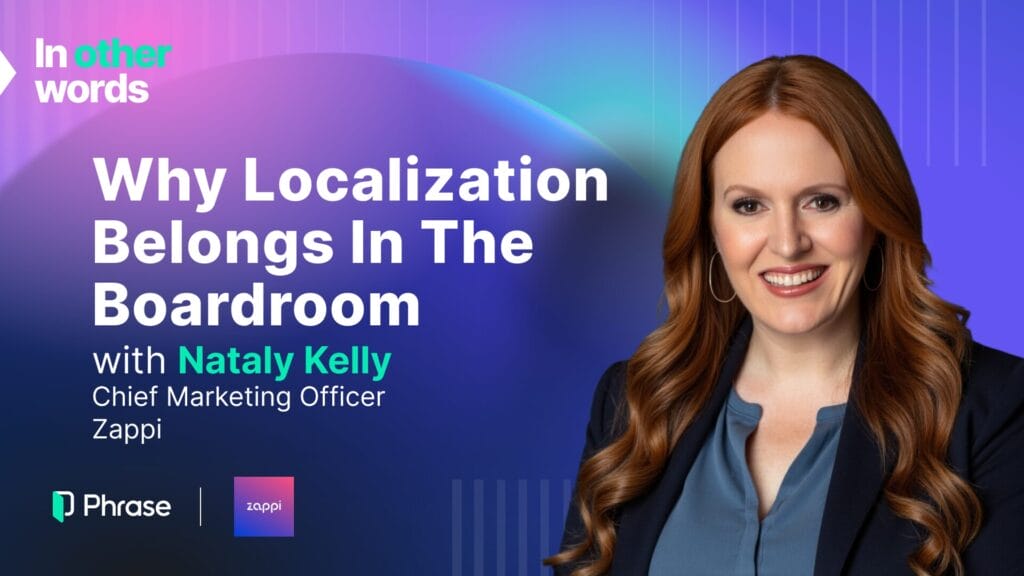Yet many executives are asking the wrong question. They focus on accuracy and volume when the true differentiator is impact. A business that produces more content does not automatically create more growth. The companies that will succeed are those that measure how content performs and adjust strategies based on real outcomes.
Why accuracy is no longer enough
For decades, accuracy defined what “good” content looked like. If a translation was grammatically correct and aligned with the source, it was deemed high quality. That narrow view worked when the challenge was simply producing content in multiple languages quickly.
Today, it is outdated. When AI can generate content instantly, accuracy is table stakes. The real test is whether content resonates with its audience, creates trust, and inspires action. An email campaign that is technically correct but fails to drive engagement delivers no return. A product description that sounds fine linguistically but does not convert is wasted effort.
This is why executives must move beyond “Is it correct?” to “Does it resonate, engage, and convert?” Without that shift, even the most accurate content is little more than noise.
Localization Today Podcast: Resonance over volume
Measure outcomes, not outputs
Executives should reframe quality in outcome-based terms. The ultimate measure of content effectiveness is not whether it was delivered on time or at scale, but whether it influenced customer behavior. Engagement signals, conversion rates, retention, and loyalty are the metrics that reveal impact.
The challenge is structural. In many enterprises, localization teams are buried in production workflows while marketing and product teams control performance data. This separation creates blind spots. Leaders see volume reports but not outcome reports, making it harder to know whether global content strategies are driving growth.
Breaking down these silos is not simply an operational improvement. It is a leadership requirement. Without alignment, businesses cannot see where opportunities are being lost or where content investment is paying off.
AI’s real value lies in evaluation
AI is often seen as a solution for producing more content, and it has certainly accelerated the ability to generate material across languages. But multilingual content generation is far from solved. Quality, consistency, and cultural nuance remain significant hurdles. A marketing campaign translated instantly may look correct, yet fail to resonate in a key market. A product support page generated at speed may lack the clarity needed to reduce call volumes. The greater opportunity lies in how AI can be applied to evaluate resonance, connect content to outcomes, and optimize performance at scale.
At Phrase, we are exploring profiling and analytics that can help evaluate whether content reflects a brand’s identity, adapts to cultural nuance, and ultimately drives customer engagement. This goes beyond linguistic evaluation and into the realm of business outcomes. When executives ask, “Does our content drive growth?” they need technology that can answer that question reliably.
This shift requires more than new tools. It requires new thinking about how content is evaluated and managed across the enterprise. Leaders must treat AI as a strategic lever for smarter decision-making, not just as an engine for faster production.
A leadership mindset shift
Two mindset changes are critical. First, leaders must treat language as a growth driver rather than a cost center. Content in the right language and context is not a compliance requirement. It is a growth accelerator that connects directly to buyer behavior and revenue.
Second, executives must set realistic expectations for AI. A model that performs well in English may struggle in Japanese, Italian, or Arabic. Assuming uniform quality across languages is a costly mistake. Scaling responsibly means balancing automation with cultural expertise so content performs everywhere, not just in the markets where AI has been trained most extensively.
The evolving role of linguists
Linguists are not being replaced by AI. Their role is expanding into something more strategic. They are becoming cultural advisors and experience designers who ensure that AI-enabled workflows deliver content that resonates as well as reads correctly.
Their expertise in nuance, tone, and cultural context cannot be automated away. Instead, it must be integrated into how AI is applied. This makes linguists critical partners in shaping customer experience, particularly as businesses aim to deliver personalization at global scale.
Scale smarter, not just faster
The era of measuring success by word count, turnaround time, or linguistic accuracy is ending. The organizations that will lead are those that measure impact. Executives who look at outcomes will not simply generate more content. They will generate measurable growth.
Scaling smarter means focusing on resonance, not just reach. It means balancing automation with human insight to ensure that every piece of content contributes to customer trust, engagement, and loyalty.
A new standard for global leadership
This shift is more than a technical adjustment. It is a redefinition of what it means to compete globally. The companies that thrive will be those that see language as inseparable from business strategy, align their teams around outcome-based metrics, and use AI as a lever for better decisions rather than faster output.
Executives who adopt this approach will unlock new ways to measure and prove the value of their content investments. They will connect language to growth, deepen customer relationships, and accelerate expansion in every market they enter. The next era of global business will not belong to the companies that produce the most content. It will belong to those that measure the right things and act on them.





